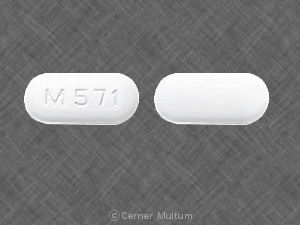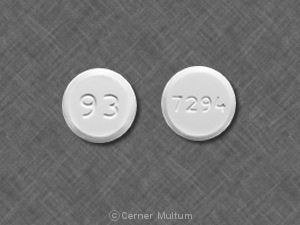What is the most important information I should know about terbinafine?
Some people taking terbinafine have developed severe liver damage leading to liver transplant or death.
Call your doctor at once if you have symptoms of liver damage, such as nausea, upper stomach pain, vomiting, loss of appetite, tiredness, dark urine, clay-colored stools, jaundice (yellowing of the skin or eyes). These events can occur whether or not you have ever had liver problems before.
What is terbinafine?
Terbinafine is an antifungal medication that fights infections caused by fungus.
Terbinafine tablets are used to treat infections caused by fungus that affect the fingernails or toenails.
Terbinafine oral granules are used to treat a fungal infection of scalp hair follicles in children who are at least 4 years old.
Terbinafine may also be used for purposes not listed in this medication guide.
What should I discuss with my healthcare provider before taking terbinafine?
You should not use terbinafine if you are allergic to it, or if you have:
To make sure terbinafine is safe for you, tell your doctor if you have ever had:
- liver problems;
- weak immune system (caused by disease or by using certain medicine); or
- lupus.
It is not known whether this medicine will harm an unborn baby. You should wait until after your pregnancy to start treating your nail or scalp infection with terbinafine. Tell your doctor if you are pregnant or plan to become pregnant during treatment.
Terbinafine can pass into breast milk and may harm a nursing baby. You should not breast-feed while using this medicine.
How should I take terbinafine?
Follow all directions on your prescription label. Do not take this medicine in larger or smaller amounts or for longer than recommended.
You may take the terbinafine tablet with or without food.
Terbinafine granules should be sprinkled into a spoonful of pudding or mashed potatoes (do not mix with applesauce, fruit juice, or other fruit-based or acidic foods). Swallow this mixture right away without chewing. Do not save the mixture for later use.
Terbinafine is usually taken for 6 weeks to treat scalp or fingernail infections, and for 12 weeks to treat a toenail infection.
Use this medicine for the full prescribed length of time. Your symptoms may improve before the infection is completely cleared. Skipping doses may also increase your risk of further infection that is resistant to antifungal medicine. Terbinafine will not treat a viral infection such as the flu or a common cold.
While using terbinafine, you may need frequent blood tests.
It may take several months for your nails to return to their normal appearance after your treatment with terbinafine.
Store at room temperature away from moisture, heat, and light. Keep the terbinafine oral granules in their sealed packet until you are ready to use.
What happens if I miss a dose?
Take the missed dose as soon as you remember. Skip the missed dose if it is almost time for your next scheduled dose. Do not take extra medicine to make up the missed dose.
What happens if I overdose?
Seek emergency medical attention or call the Poison Help line at 1-800-222-1222.
Overdose symptoms may include headache, dizziness, vomiting, stomach pain, rash, and increased urination.
What should I avoid while taking terbinafine?
Avoid coffee, tea, cola, energy drinks or other sources of caffeine while taking this medicine.
Avoid exposure to sunlight or tanning beds. Terbinafine can make you sunburn more easily. Wear protective clothing and use sunscreen (SPF 30 or higher) when you are outdoors.
What are the possible side effects of terbinafine?
Get emergency medical help if you have signs of an allergic reaction (hives, difficult breathing, swelling in your face or throat) or a severe skin reaction (fever, sore throat, burning in your eyes, skin pain, red or purple skin rash that spreads and causes blistering and peeling).
Seek medical treatment if you have a serious drug reaction that can affect many parts of your body. Symptoms may include: skin rash, fever, swollen glands, flu-like symptoms, muscle aches, severe weakness, unusual bruising, or yellowing of your skin or eyes. This reaction may occur several weeks after you began using terbinafine.
Some people taking terbinafine have developed severe liver damage leading to liver transplant or death. It is not clear whether terbinafine actually caused the liver damage in these patients. In most cases, the patient had a serious medical condition before taking terbinafine.
Call your doctor at once if you have symptoms of liver damage, such as nausea, upper stomach pain, vomiting, loss of appetite, tiredness, dark urine, clay-colored stools, or jaundice (yellowing of the skin or eyes). These events can occur whether or not you have ever had liver problems before.
Also call your doctor if you have:
- changes in your sense of taste or smell;
- depressed mood, sleep problems, lack of interest in daily activity, feeling anxious or restless;
- pale skin, easy bruising, unusual bleeding (nose, mouth, vagina, or rectum), purple or red pinpoint spots under your skin;
- swelling, rapid weight gain, little or no urinating;
- blood in your urine or stools;
- weight loss due to taste changes or loss of appetite; or
- skin sores, butterfly-shaped skin rash on your cheeks and nose (worsens in sunlight).
Common side effects may include:
- diarrhea, nausea, gas, stomach pain or upset;
- rash;
- headache;
- abnormal liver function tests.
This is not a complete list of side effects and others may occur. Call your doctor for medical advice about side effects. You may report side effects to FDA at 1-800-FDA-1088.
What other drugs will affect terbinafine?
Other drugs may interact with terbinafine, including prescription and over-the-counter medicines, vitamins, and herbal products. Tell your doctor about all your current medicines and any medicine you start or stop using.
Where can I get more information?
Your pharmacist can provide more information about terbinafine.
Remember, keep this and all other medicines out of the reach of children, never share your medicines with others, and use this medication only for the indication prescribed.
Every effort has been made to ensure that the information provided by Cerner Multum, Inc. ('Multum') is accurate, up-to-date, and complete, but no guarantee is made to that effect. Drug information contained herein may be time sensitive. Multum information has been compiled for use by healthcare practitioners and consumers in the United States and therefore Multum does not warrant that uses outside of the United States are appropriate, unless specifically indicated otherwise. Multum's drug information does not endorse drugs, diagnose patients or recommend therapy. Multum's drug information is an informational resource designed to assist licensed healthcare practitioners in caring for their patients and/or to serve consumers viewing this service as a supplement to, and not a substitute for, the expertise, skill, knowledge and judgment of healthcare practitioners. The absence of a warning for a given drug or drug combination in no way should be construed to indicate that the drug or drug combination is safe, effective or appropriate for any given patient. Multum does not assume any responsibility for any aspect of healthcare administered with the aid of information Multum provides. The information contained herein is not intended to cover all possible uses, directions, precautions, warnings, drug interactions, allergic reactions, or adverse effects. If you have questions about the drugs you are taking, check with your doctor, nurse or pharmacist.
Copyright 1996-2018 Cerner Multum, Inc. Version: 13.03. Revision date: 11/9/2017.




